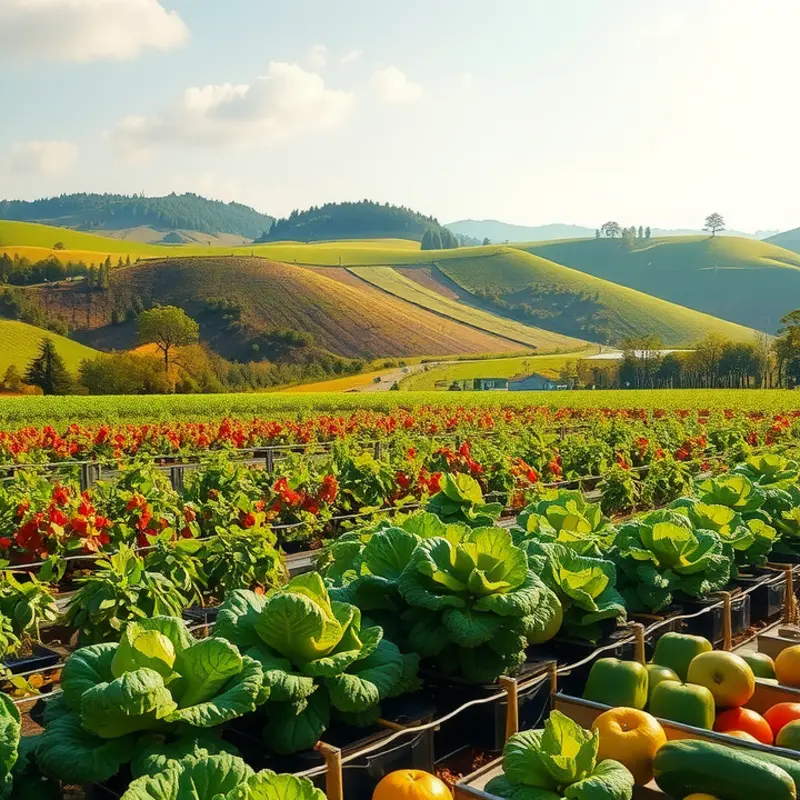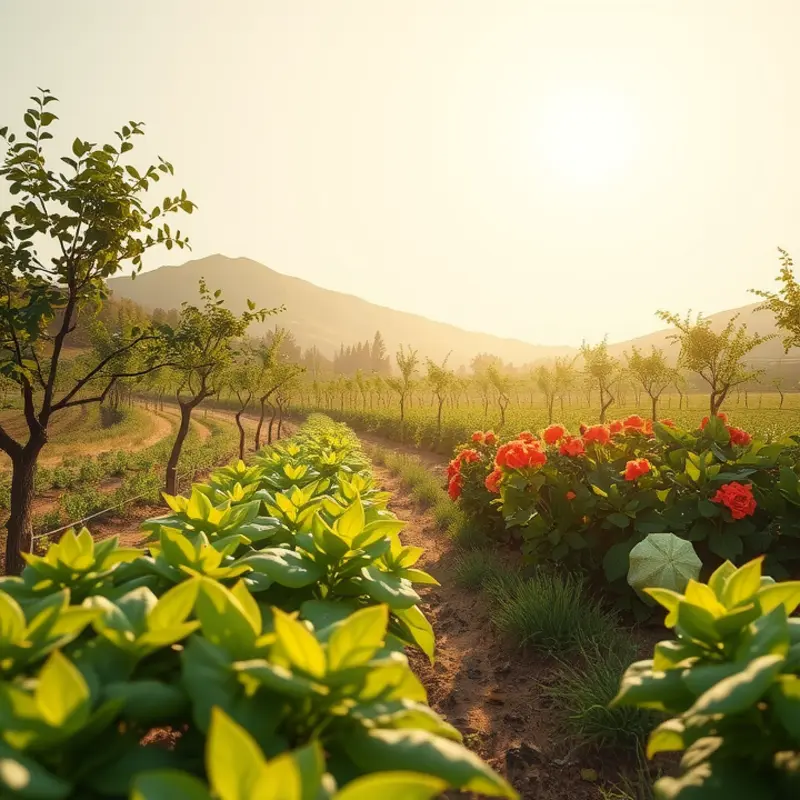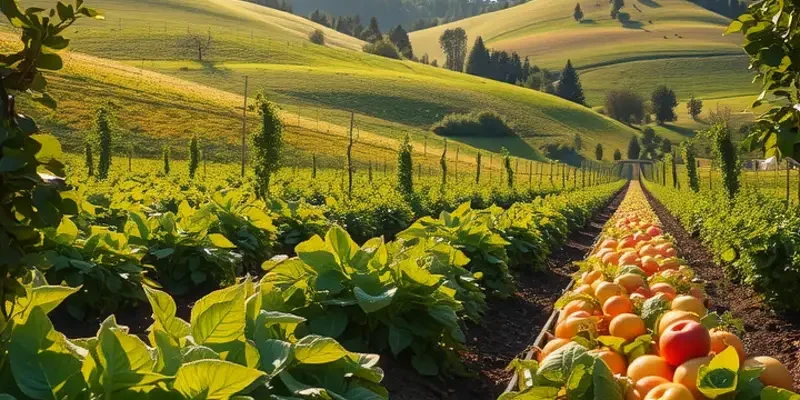From the bold warmth of Indian garam masala to the ethereal fragrances of Moroccan ras el hanout, regional spice blends play a pivotal role in defining culinary identities. These flavorful concoctions not only elevate dishes but also tell tales of history, culture, and tradition. As food enthusiasts venture into the rich tapestry of global cuisine, understanding these blends offers a portal into the heart of each culture. Join us as we delve into two distinctive regions — Southeast Asia and the Mediterranean, revealing the unique spice blends that capture the essence of their culinary heritages.
Southeast Asia: A Symphony of Flavors

Southeast Asia is a captivating region where spice blends sing an aromatic symphony of flavors. Each country’s culinary rhythm features unique notes, yet harmonizes beautifully with its neighbors. Dive into the heart of Thai, Indonesian, and Malaysian kitchens, where chilies, lemongrass, and galangal manifest into vibrant pastes and sauces that define Southeast Asian cuisine.
Thai chili paste, or Nam Prik Pao, is a quintessential ingredient in Thai cooking. It combines dried chilies, garlic, shallots, and shrimp paste. Often cooked in oil until aromatic, it serves as the base for a variety of dishes. Its sweet, sour, and spicy flavor profile is perfect for enhancing stir-fries, salads, and even soups. More than an ingredient, it embodies balance—an essential principle in Thai culinary philosophy.
Crossing over to Indonesia, sambal stands as a staple. This versatile chili paste embodies Indonesia’s rich culinary tradition. While there are over 300 kinds of sambal, they all start with the same foundation: chilies, salt, and lime juice. Sambal Terasi adds shrimp paste, imbuing it with umami richness. Sambal Bajak, meanwhile, incorporates shallots, garlic, and palm sugar. An Indonesian meal feels incomplete without at least one form of sambal on the table, offering a burst of heat that complements rice and protein dishes.
Malaysia’s rendang paste reveals a more complex medley of ingredients. Often referred to as the pinnacle of Malaysian cuisine, rendang transforms ordinary meat into succulent, spicy perfection. Made from a blend of cumin, coriander, ginger, turmeric, and coconut milk, it simmers for hours until the meat absorbs the deep, spicy flavors. The paste unfolds layers of taste—from nutty to aromatic—with each bite. Such intricate preparation reflects the Malaysian spirit of patience and tradition in cooking.
The spice blends of Southeast Asia hold cultural significance, serving as a medium of social and familial connections. They are shared during festivities and everyday meals, representing unity while retaining each culture’s individuality. These blends are more than flavor enhancers; they are storytellers, weaving history and tradition into the fabric of daily life.
To store and preserve these aromatic treasures, consider following sustainable storage practices to minimize waste and maintain freshness. Eco-smart kitchen storage solutions can be particularly beneficial, ensuring your favorite spice blends stay potent longer.
As we savor the mixture of heat, sweetness, and tanginess in these spice blends, we embark on a sensory journey. The smells, colors, and tastes are vibrant reminders of Southeast Asia’s rich culinary landscapes. Each blend invites us to explore not just the flavors at our fingertips, but also the cultures and histories they represent.
Mediterranean Whispers: Herbs and Spices Unite

The Mediterranean region is a tapestry of cultures and flavors, where traditional spice blends shine in everyday cuisine. The aromatic dance of herbs and spices here is both a culinary delight and a nod to history. Among the most cherished blends in this region are za’atar, dukkah, and advieh, each telling stories of their origins and evolution.
Za’atar, a staple in Levantine cuisine, is a vibrant mix of dried thyme, sumac, sesame seeds, and salt. Some variations include oregano or marjoram, adapting to local tastes. Its historical roots extend back centuries, where za’atar was not only a flavor enhancer but also revered for its supposed health benefits. Ancient texts often reference this blend as both a culinary and medicinal ingredient. Today, it is sprinkled over foods like flatbreads, incorporated into marinades, or simply mixed with olive oil as a dip to accompany bread. This versatile blend reflects the adaptability and shared culinary heritage of the Mediterranean people.
Travel westward and you’ll encounter dukkah, an Egyptian blend that captivates with its texture and earthy flavor. Composed of roasted nuts, seeds, and a hint of spice, each family recipe varies slightly, adding to its charm. Traditionally made with hazelnuts or almonds, sesame seeds, coriander, and cumin, dukkah is a testament to Egypt’s rich culinary landscape. Its origins are shrouded in mystery, but it has been a staple in Egyptian households for generations. The crunchy, aromatic mix is often paired with olive oil and fresh bread or used to crust meats and fish, infusing them with a delightful crunch and warm flavor.
In the eastern Mediterranean, particularly Iran, advieh adds an opulent touch to dishes. This Persian spice blend varies greatly, but typically includes cinnamon, cardamom, cumin, and turmeric, with some regional variations infusing it with rose petals for a hint of floral sweetness. Advieh’s roots reach deep into Persian culinary traditions, showcasing the region’s emphasis on balance and flavor complexity. It’s used in everything from rice dishes to stews, adding layers of depth and sophistication. The history of advieh mirrors the Persian empire’s interactions with various cultures, blending the spices of the East with local ingredients.
These spice blends are more than just ingredients; they are ambassadors of their regions, carrying memories and stories from ancient trade routes to modern kitchens. As trade and cultural exchanges flourished across the Mediterranean, these blends evolved, absorbing influences and adapting to the diverse culinary palettes they encountered.
Emerging from this historical richness, Mediterranean spice blends offer a window into the interconnected nature of global cuisine. Each time you sprinkle za’atar over your dish or dip bread into dukkah, you’re partaking in a tradition that spans millennia. For more insights on how culinary influences shape food culture, visit Culinary Influences and Trade.
Final words
Exploring the world of regional spice blends reveals a treasure trove of culinary traditions and cultural heritage. Southeast Asia tantalizes with its bright and vibrant flavors, inviting diners to savor its rich diversity, while the Mediterranean enchants with its fragrant herbs and complex blends that symbolize the region’s communal and historical narratives. The essence of each cuisine is woven into its spices, and as food enthusiasts, embracing these blends allows for a richer culinary experience. So, the next time you cook or dine, remember the stories behind your spice blend, for they bring a dash of culture into every bite.








